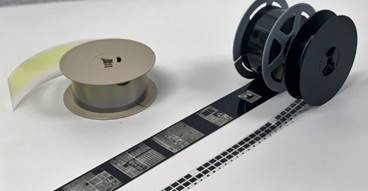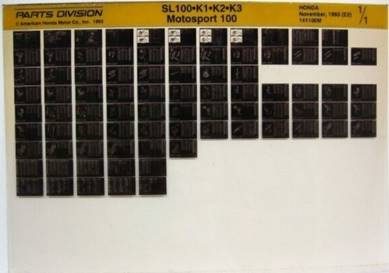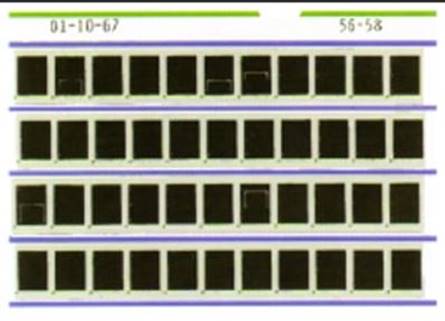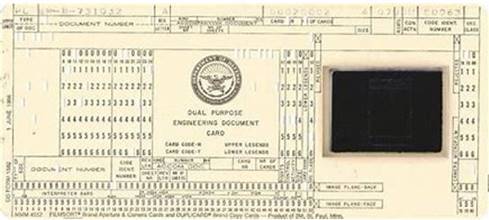Chapter 14: Microfilming Records
Anchor: #i1016800Section 1: Overview
Anchor: #i1016811Introduction
Texas Government Code Section 441.188 and 441.189 and Texas State Library and Archives Commission Bulletin 2 “Microfilming Standards and Procedures” authorizes agencies to retain records on microfilm or electronically stored images. Microfilm is a high-resolution film in roll or fiche form or mounted onto aperture cards containing micro-images. Document imaging involves the conversion of hard copy original documents or records to an alternative media.
Records with permanent or long term (more than 20 years) retention periods or archival requirements may be retained on microfilm. Offices choosing to microfilm records may obtain those services through a purchase of services. This chapter contains guidelines for microfilming. See Chapter 7, “Electronic Records,” for information on electronic imaging.
NOTE: Imaging records has replaced the practice of microfilming at TxDOT.
Anchor: #i1016858Microfilmed Records
Texas Government Code 441.188 states the following:
- Anchor: #AOVPPQGX
- Any official record may be maintained on microfilm. Anchor: #WBHBKHCJ
- The microfilming of any official record and the maintenance of an official record on microfilm must be in accordance with standards and procedures adopted as administrative rules of Texas State Library and Archives. Anchor: #DBPXYETG
- A microfilmed record created in compliance with the rules of Texas State Library and Archives is considered an original record and the microfilmed record or a certified copy of it shall be accepted as such by any court or administrative agency of Texas. Anchor: #KYXFXIQJ
- A microfilmed record that was produced in accordance with any state law in force before September 1, 1997, is considered an original record.
General Guidelines
This section applies to the microfilming of any official record that is to be maintained solely on microfilm format.
- Anchor: #XGEIQWKM
- Microfilming of records must follow the Records Retention Schedule, Anchor: #OSTEXJHQ
- For microfilm retained as roll film, no more than one record series is permitted on each roll of microfilm. Anchor: #KCXWDKYR
- For essential records that are microfilmed, there must be a security copy stored offsite. Anchor: #JSRPPQTN
- The originals of records or source documents that have been microfilmed may be destroyed prior to the expiration of their retention periods only if the microfilm complies with these sections and in accordance with Government Code, Section 441.189. Anchor: #EBMQSJUW
- After the completion of the production tests and inspections, original microfilm must not be unwound and used for any purpose except: Anchor: #MDAJRPOT
- To produce copies of the film. Anchor: #RULVOLVS
- To carry out inspections, expunge or destroy records as identified in Texas State Library and Archives Commission “Microfilming Standards – Bulletin 2”, Sections 6.27, 6.32 and 6.33. Anchor: #QYUNYCEE
- If a service provider is used for the filming, processing, and/or storage of official records, a written agreement must be in place to provide access in compliance with local, state, and federal laws or delivery of the records as needed by TxDOT and to allow inspections of microfilming facilities by Records Management, Records Administrator or Records Coordinators, or another authorized representative of TxDOT. Anchor: #GVHKOAHX
- All microfilm produced before prior to 1997 is validated to the extent the microfilm was produced in the manner and according to the standards prescribed by prior law.
Microfilming and Microfilm Formats
Most department records require retention for fewer than five years. For all but permanent or archival records, storage in the original format is the easiest and cheapest way to retain hard copy inactive records until their destruction date.
The space-saving and distribution advantages of microfilm can be achieved by electronic imaging without incurring the limitations of film. Microfilming is labor-intensive and expensive. Managers should carefully evaluate the actual need to use microfilm. Considerations include the manpower to prepare and index the records for microfilming, to inspect the microfilm product after filming and the cost, availability, and maintenance of equipment to store and read or print copies from the microfilm.
|
Advantages |
Limitations |
|---|---|
|
Space savings. Microfilm concentrates a large volume of information in a small package. One 250-foot roll of 16 mm microfilm can hold the equivalent of a document storage box of records (up to 4,200 8 ½”x11” pages or images). Nine 100-foot rolls can store the equivalent of one five-drawer file cabinet (5,000 8 ½”x11” pages or images). Low-cost distribution. Microfilm is inexpensive to duplicate. File integrity. Once filmed, all records in a file are together, and individual records cannot be physically removed, lost, or misfiled. Any alteration is apparent. Security. Duplicative security copies can be stored in a separate place. Archival preservation. Microfilm may be used for reference in place of original documents and can offer an increased life span. Convertibility. Microfilm images may be converted to paper, or with proper equipment, digitized. |
Expense. Microfilm is expensive and labor-intensive to create Unclear copy. The quality of the original record affects the quality of the filmed image. Old, faded, or damaged documents may not reproduce clearly. Colors do not appear, and it may be difficult to tell whether a filmed record is the original. Official certifications and explanatory notes filmed with the records on target sheets can address these limitations to some extent. Equipment requirements. Microfilm will deteriorate if it is stored in an environment that does not have temperature and humidity controls. See Section 3 “Microfilm Storage Environment and Requirements, Equipment and Maintenance” in this chapter. The product of deterioration, acetic acid, may present a workplace hazard to employees. User resistance. Using microfilm and microfilm equipment for any length of time can be tedious. |
Anchor: #i1017123
Microfilm Formats
The most common used microfilm formats include:
- Anchor: #SMHIOSOI
- Roll
film: The most economical microform, 16 mm width is typically
used for documents, and 35 mm widths are used for larger format
documents such as drawings or maps. Roll film ensures file integrity
and is best used for long-term storage of inactive records.
Figure 14-1. Roll Film
Anchor: #EHFEBPSS - Microfiche: A sheet
of 105mm film (usually 4 inches by 6 inches) that can contain at
least 98 images (depending on the size of the originals), microfiche
is best used for frequently referenced files. An eye-readable label
makes retrieval easier. Because a microfiche is a single unit, it
provides reasonable file integrity. It is moderately expensive to
produce, although a microfiche reader is the least expensive type
of microfilm reader. Microfiche, jackets (transparent cards 4 inches
by 6 inches with chambers for the insertion of individual frames
or strips of microfilm) are typically produced and the customer
is furnished a microfiche duplicate for active use.
Figure 14-2. Microfiche
Anchor: #HCOGBYCM - Microfiche Jackets (transparent
cards 4 inches by 6 inches with chambers for the insertion of individual
frames or strips of microfilm) are typically produced and the customer
is furnished a microfiche duplicate for active use.
Figure 14-3. Microfilm Jackets
Anchor: #URPWIJGE - Aperture Cards –
An electronic data processing card with an opening that contains
one frame of microfilm. This frame is usually cut from a roll of
film.
Figure 14-4. Aperture Cards



